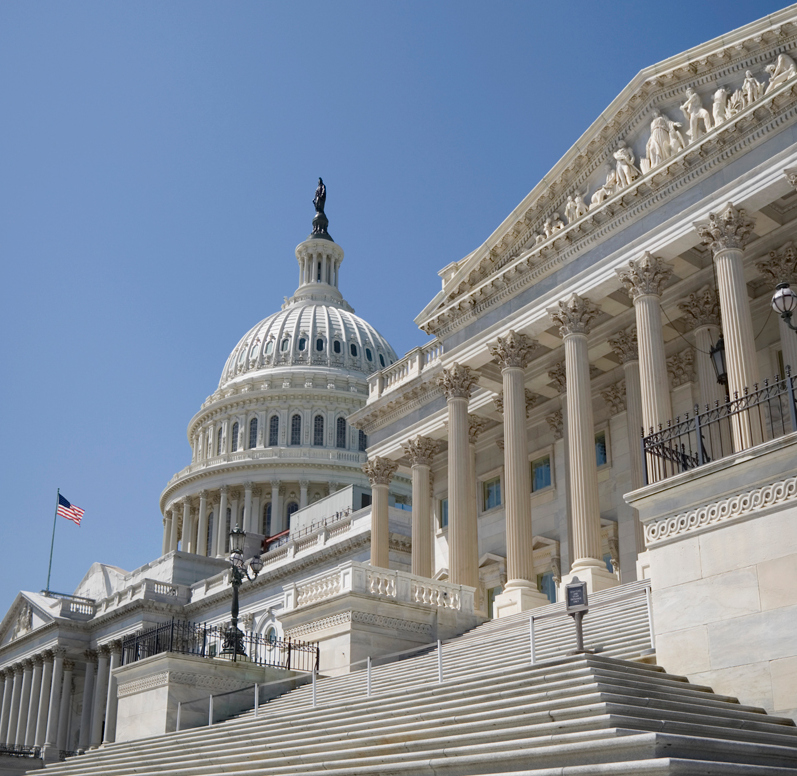By Seth Brown, stormwater program and policy director, Water Environment Federation
The biggest topic in the stormwater sector over the last few years has undoubtedly been the national stormwater rulemaking, an effort led by the U.S. Environmental Protection Agency (EPA) to overhaul the Federal stormwater program. The rulemaking’s rocky path reflects the challenging nature of managing runoff, which is not truly a point or nonpoint source. After numerous delays causing uncertainty in the sector, some regulatory clarity has been provided on the status and potential future of the national stormwater program.
In the beginning
Urban stormwater runoff was not included in the original Clean Water Act legislation. This is due to the large, and fairly obvious, effects of traditional point sources, such as industrial process and wastewater treatment plant effluent. At the time, flood control of infrequent events was the primary focus of stormwater programs.
Along the way, people began to question not only the volume of runoff, but also its quality. Focused on the question of quality, the National Urban Runoff Program confirmed that runoff could indeed cause significant impairment in waterbodies. Cue the 1987 Clean Water Act Amendments, which created Phase I of a national stormwater program located under the EPA Office of Wastewater Management’s National Pollutant Discharge Elimination System (NPDES) program. Phase I of the program, started in 1990, targeted large communities, industrial footprints, and construction sites. The approximately 700 Phase I communities were the first to address stormwater runoff in terms of both quality and quantity.
Phase II was promulgated in 2003 in an effort to bring in mid-sized cities, representing a significant shift in the sector by expanding the responsibility for treating runoff beyond large municipalities. Approximately 7000 more communities came into the program, and Phase II also lowered thresholds for industrial facilities and construction sites.
At this time, leading communities began using small distributed and retention-based practices to reduce costs associated with drainage infrastructure as well as the impact of land development on receiving waters, hence the term low impact development (LID). This approach prevented pollution by reducing runoff volume, a change from the previous norm of just capturing and treating the excess runoff created by urbanization.
LID spread to other communities under various names — environmental site design and green infrastructure, for instance. Now 18 state stormwater programs have some form of a retention-based performance standard. Leaders in the wastewater sector, such as Philadelphia, also are using landscape-based retention practices as a primary tool for addressing combined sewer overflows.
In 2009, the National Research Council released a report titled “Urban Stormwater Management in the United States,” which provided a comprehensive critique of the EPA’s stormwater program. The major takeaway from this report is that managing urban runoff by capturing, conveying, treating, and releasing it may have been a good start, but considering the continued decline of U.S. waters, retention-based approaches are needed to adequately address the effects of urbanization on receiving waters.
Still waters
In the context of this report, the Chesapeake Bay Foundation (CBF) sued EPA for not fully implementing the Clean Water Act. The lawsuit led to a 2009 settlement agreement that included, among other items, a promise to update the Federal stormwater program in a rule finalized in June 2012.
Armed with the National Research Council’s peer-reviewed critique of the status quo and a legal driver, the EPA entered into a rulemaking process in 2010. Early presentations by EPA on the rulemaking’s potential elements included an expansion of regulated areas. The agency wanted to focus on integrating urbanizing areas located beyond the limits of currently regulated areas into existing Municipal Separate Storm Sewer System (MS4) programs. EPA also discussed a retrofit requirement for some Phase I communities, and most significantly, a retention-based national performance standard for new development and redevelopment activities based most likely upon percentile stormwater capture.
As the process unfolded, EPA failed to meet interim proposal deadlines and softened some potential elements of the proposed rule or removed them entirely, such as the retrofit requirement. However, after each delay, EPA declared it was still moving forward with the rulemaking.
The message changed in March, however, when EPA notified the sector that it was “deferring” on the rule and shifting resources to strengthen its existing program. In other words, the rule may not be “dead,” but there will not be a national stormwater rule anytime soon. Normally, rules are reviewed by the Office of Management and Budget (OMB) prior to the release of a proposal. For context, the stormwater rulemaking effort never even made it out of EPA’s internal “option selection” process that needed to take place before sending the proposed rule to OMB.
The road not taken
Why is the proposed stormwater rule not moving forward? It could be that costs and benefits didn’t align as they needed to for OMB approval. Cost-benefit analyses are the fundamental basis of rulemaking, so this could be a considerable impediment. EPA has been fairly transparent throughout the rulemaking process about the challenges associated with collecting and analyzing cost and benefit data, and even pointed to this when deadlines were missed.
Time may have been another factor. It takes at least 18 months to release a proposed rule, gather comments, and issue a final rule. OMB’s review would take at least 90 days followed by a typical 90-day comment period. Even if the rule were released today, this process would take until approximately November 2015, leaving EPA with only 14 months to review comments and generate a final rule before the end of the current administration.
Similarly, it could be a resource issue, considering the high priority EPA has placed on clarifying the Waters of the United States (WOTUS) ambiguity resulting from the Solid Waste Agency of Northern Cook County and Rapanos Supreme Court rulings, the associated “significant nexus” test for connectivity to navigable waters. The agency, with the U.S. Army Corps of Engineers, released the proposed WOTUS rule in late March. Because of WOTUS and other high priority issues, such as greenhouse gas regulation, there just may not be enough firepower left at EPA to tackle the stormwater rulemaking.
What about the settlement agreement with CBF? At this point there is no clear answer. CBF is on the record as being “uncertain” whether it will take legal action.
Complexities
Like the national secondary treatment standard for wastewater effluent associated with the passage of the Clean Water Act, the stormwater rulemaking was ultimately aimed at providing a treatment baseline. It would have raised all states to the same level as the 18 that already have a retention-based standard.
Between the 1940s and 1960s, states were left to their own devices to address municipal wastewater. According to a 2000 EPA report titled “Progress in Water Quality: An Evaluation of the National Investment in Municipal Wastewater Treatment,” in 1972 16% of publicly owned treatment works still discharged raw sewage while only 3% used tertiary (advanced) treatment processes. Six years after the passage of the Clean Water Act, with billions of dollars injected into the sector through construction grants, raw discharges dropped to 0.6% and were completely eliminated by 1996. Advanced treatment jumped over sixfold to 19%.
Like the wastewater sector in the middle of the 20th century, the stormwater sector is still in its early stages. States have the responsibility to address impacts, yet stormwater runoff is the only increasing source of water pollution in many watersheds across the country.
However, the nature of managing and regulating stormwater also is exceedingly complex and as elusive as runoff itself. Stormwater is a point-nonpoint hybrid that is diffuse and intermittent, contained primarily by landforms, and is affected by land use. It is not as easy to capture or as predictable as wastewater, which has regular pollutant loadings and peak flows.
EPA’s inability to move the rulemaking forward may reflect the challenge of nationalizing a treatment standard for stormwater, which is inherently tied to climatological variability and equally heterogeneous soil conditions, land covers, and site constraints. EPA’s proposed use of a percentage of storm capture was intended to circumvent the issue that there is no one-size-fits-all standard. While this approach respects hydrological variability, it does not respond to the variability of watershed responses to precipitation inputs. For instance, clay soil retention and large-scale rainwater harvesting questions have been raised. EPA’s response of meeting a “water quality backstop” — an underlying water quality treatment standard in circumstances where retention is not deemed feasible — and the use of waivers may not suffice.
Finally, failure to move the rulemaking forward may illustrate that the stormwater sector must further mature not only on the technical side, but also on the messaging and quantification of benefits, especially those pertaining to public health.
Over the horizon
So what does this mean for stormwater practitioners? MS4 permits may continue to become more stringent. Further, EPA may make a greater effort to integrate MS4 discharges into wasteload allocations (WLA) associated with total maximum daily loads (TMDL) impacted by stormwater runoff. WLA’s represent the regulated amount of discharge from a particular pollutant allowed by each regulated entity in watersheds with TMDLs.
This viewpoint is based on recently presented EPA data on the state of the MS4 program. For instance, nearly half of all Phase II and a quarter of Phase I permits are currently expired. Similarly, more than 80% of large Phase I communities and half of all Phase II communities discharge to impaired waters. Anecdotally, one can surmise that the number of WLAs incorporated into MS4 permits does not match those same percentages, but no data exist to confirm that. An increase of WLAs in MS4 permits may mean more monitoring of practices and systems. Monitoring efforts likely will be bolstered by decreasing costs for powering monitoring devices as well as collecting and analyzing data through cloud-based technology. For example, according to the Bloomberg New Energy Finance Solar Module Price Index, solar power technology costs dropped by 45% between 2011 and 2012. Costs have since settled at about $1 per watt of capacity for silicon modules, which is considered to be a “golden threshold” for the industry.
Stormwater may well become a “big data” industry, especially as the sector looks for ways to optimize systems and programs. More data can help communities understand the efficacy of current programs, which may inform the need (or not) for future rulemakings. Finally, a continued push for more research in the quantification of green infrastructure benefits may aid in developing a cohesive sector-wide message that goes beyond water quality.
Sorry, there are no polls available at the moment.













